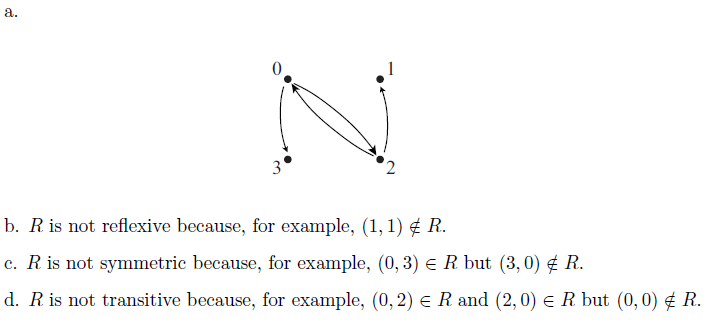Let A = {0, 1, 2, 3} and define a relation R on A as follows:
R = {(0, 2), (0, 3), (2, 0), (2, 1)}.
(a) Draw the directed graph of R.
(b) Is R reflexive? Explain.
(c) Is R symmetric? Explain.
(d) Is R transitive? Explain.

Mathematics
You might also like to view...
Solve.Find the points of intersection of the ellipse 81x2 + 49y2 = 3969 and the line 7y - 9x = 63.
A. (0, 9), (-7,0) B. (0, 7), (0, -9) C. (0, -7), (9, 0) D. (0, -9), (7, 0)
Mathematics
Determine whether the statement is true or false.Let A = {1, 3, 5, 7} B = {5, 6, 7, 8} C = {5, 8} D = {2, 5, 8} U = {1, 2, 3, 4, 5, 6, 7, 8}A ? {7, 5, 3, 1}
A. True B. False
Mathematics
Use polar coordinates to find the limit of the function as (x, y) approaches (0, 0).f(x, y) = 
A. 1 B. 2 C. 0 D. No limit
Mathematics
Simplify the radical.-
A. -2x - 3 B. -|2x - 3| C. -2x + 3 D. |2x - 3|
Mathematics